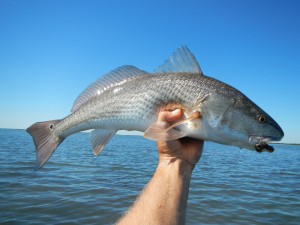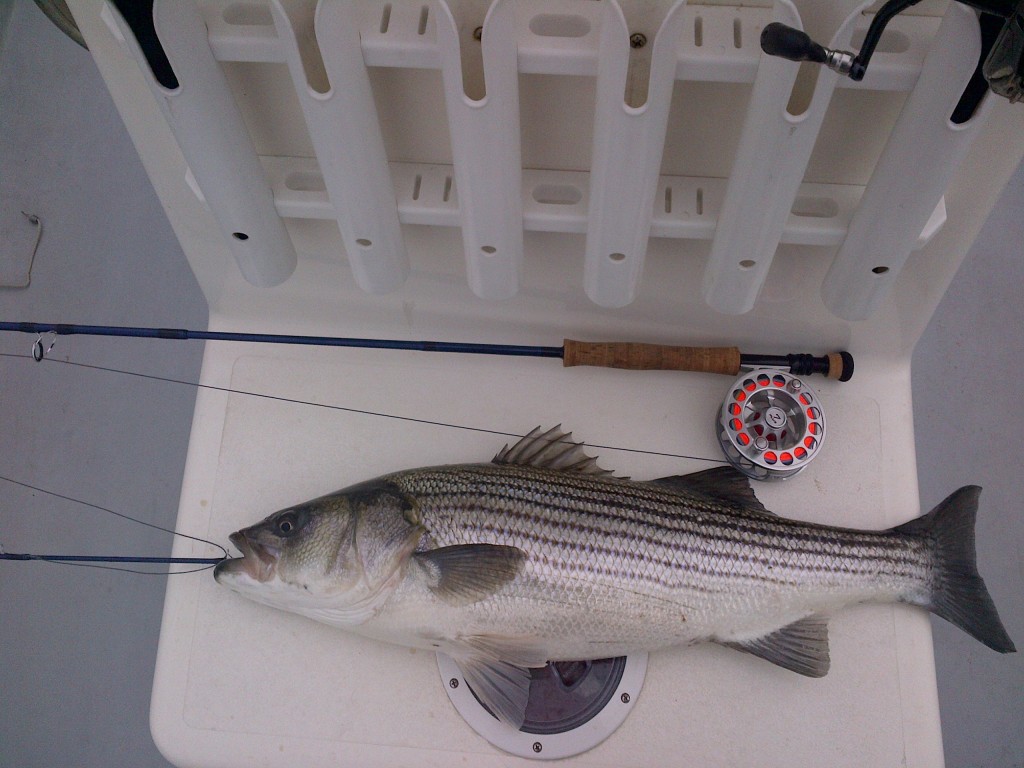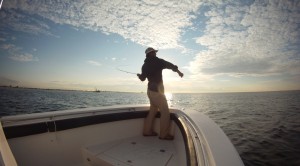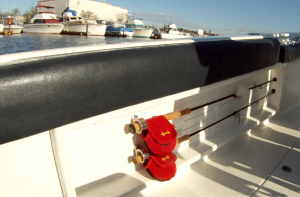Cat is out of the bag but loves the water!
The fall saltwater fly fishing season in New York and vicinity is HOT!
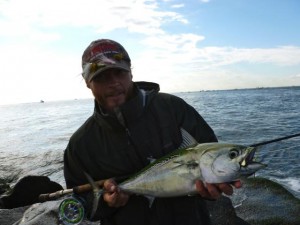
Blind casting can be rewarding when fish are near but seemingly "out of reach"
Cooling air temps and the subsequent fall in water temperatures in New York provide special times when multiple species can caught from shore, jetty, or beach. In NYC’s marine saltwaters, its the Striped bass, bluefish and false albacore that draw people from their slumber and delay them in the evenings! Yeah!
As someone who has fished from shore enough to be considered down-right crazy by the locals, I encourage you to find your favorite areas and work them thoroughly, steadily, and with routine and even at regular intervals such a 3 evenings in a row, or two pre-dawn mornings back to back. This will hep you see minor changes in the habitat and structure of the beach, and how the current runs at different tide stages. Soon then you will learn, Hey! This spot fishes best during top flood tides and this spot holds bait better on the bottom half of outgoing/incoming tides. You may also discover that the current comes closer to shore at a certain stage in the tide than at other times! Thats always a plus! I always looks for places where my line move sideways when cast into the water. This confirms that current is present and saltwater fish absolutely love the feeding advantages that strong current provides them.
Fly Fishing from the beach or jetties can be very rewarding if good strategy is practiced. Don’t let the other fisherman around you discourage you, or tell you if the fish are biting or not although I cant help but stop and ask because I live to hear fishing stories.
Perhaps though, it is possible that they just didn’t figure out the bite that day and maybe they didn’t use enough finesse to make a catch. I just prefer that the fish tell me whether or not they are hungry! Many times I have gotten up-to-the-minute reports from others telling me nothing is eating. Then after I get out there and spend some time working an area the fish usually tell me if they are interested or not! A few aspects of saltwater fly fishing (particularly in the Northeast) that should be mentioned here is that there are a few key things that can be done to get your own first-hand opinion on how the fish are biting. Worse case you’ll get in some good practice casting!
Once you settle into an area that looks fishy, work your flies through the entire water column. I typically start with a fly that rides shallow in the water, for better visibility which gives me the chance to see a fish follow or even strike the fly. This will tell me if the fish are playful and if they follow but reject the fly, then I can make minor adjustments to my approach, technique of presentation and fly selection. It is also important to start fishing by making short casts, essentially fishing the area within a 40-ft radius of your feet. If then there are no takers, I will begin working the water column from the top down, casting further out as I continue prospecting. Make casts in ways in which the fly and line have time to sink (such as when casting up current) and follow the fly back down, across and behind, as if swinging spey style. Keep the line tight and stay in contact with the fly at all times. This will help you cover water in a uni-lateral direction. Pay close attention to currents whether they be up, down, or across as well as the vertical part of the water column. This will help you rule out unproductive water as well as help you determine where in the water column the fish are feeding and what the fish have in their preference lists. Usually I will also throw two or even three patterns through a certain area before moving on. The fish pictured above ate on the second cast of the 4th fly pattern I had selected to fish in that area.
Additionally, don’t overlook your tippet selection if you are in the mood to tangle with a false albacore. Even in stained or dingy water slightly off-color, I find that dropping my tippet to 15-lb TroutHunter 0x fluorocarbon tippet still pays off when most others are not getting bites at confirmed fish such as when casting into a boil or breach. You can get TroutHunter tippets in Manhattan at Urban Angler. Spools are 50 yards, yes thats right, FIFTY Yards!
Lastly, I strongly suggest using the two-handed stripping technique, after the cast, the rod is tucked under the arm and both hands are used, palms up, to strip line in. The most known benefit of this technique is to allow you to move the fly faster but in my opinion the most invaluable benefit of this retrieve is that one hand always has contact with the line in which case you can detect even the most subtle strikes, or strikes from fish that come straight at you as well as allow you to set the hook in an instant without having to reach for more line. One hand or the other remains in contact with the line at all times. Strip setting is now made faster because the hook can be set with either hand at any given moment! The trick of using this retrieve to its fullest potential is to strip line smoothly with both hands, but doing so slowly, and only fast enough that you maintain tension on the line during the retrieve. Then you can change it up a bit by adding a twitch or two and or making a longer pull with your stripping hand. Stops and starts of the fly can also be finessed from most any fly using this technique so long as you keep the rod tip pointed at the fly line where it enters the water.
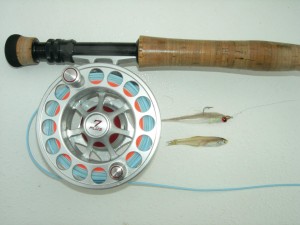
Notice the bay anchovy is not two-tone . The bottom of the tail is also the same color as the back of the fish.
Fly Tying tip du jour: Clousers Minchovy (modified minnow)
When tying Bob Clouser’s monument fly, the Clouser Minnow, use a short dubbing loop to dub the body of the fly behind the dumbell eyes with Hareline Ice Dub or SLF Prism dubbing. This covers the tread wraps but also imitates the silver lined stomach cavity that the bay anchovies have so distinguished. On the bay anchovy, their bodies are almost completely translucent tannish brown. The only two body parts on a bay anchovy that are not translucent are the lining of its stomach (silver/opaque) and their eyes.
Therefore, if you tie a clouser minnow in all tan buck tail with dumbell eyes of choice, then dub the body of this fly with some pearl flash dubbing as mentioned above, and Voila, you have a more precise imitation. Note: tan is not the only color scheme to use, I also ties these in off-white, light olive, dark olive, pink, chartreuse, and even black and purple. Use similar and corresponding shades for the dubbing as well to keep the color scheme common.
Remember to keep your hook sharp (Go Tiemco!) and get out there and fish for the fresh air and practice if for nothing else!
Keeping the hooks sharp,
Captain Ken Jones
Kenjo Fly Fishing
ken@kenjofly.com
